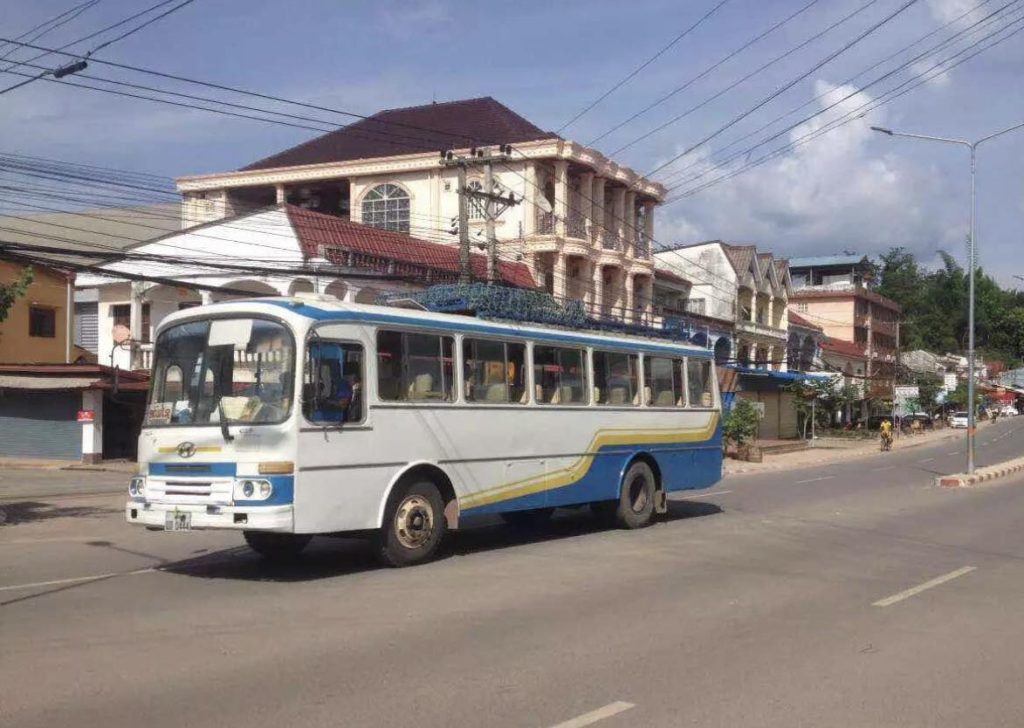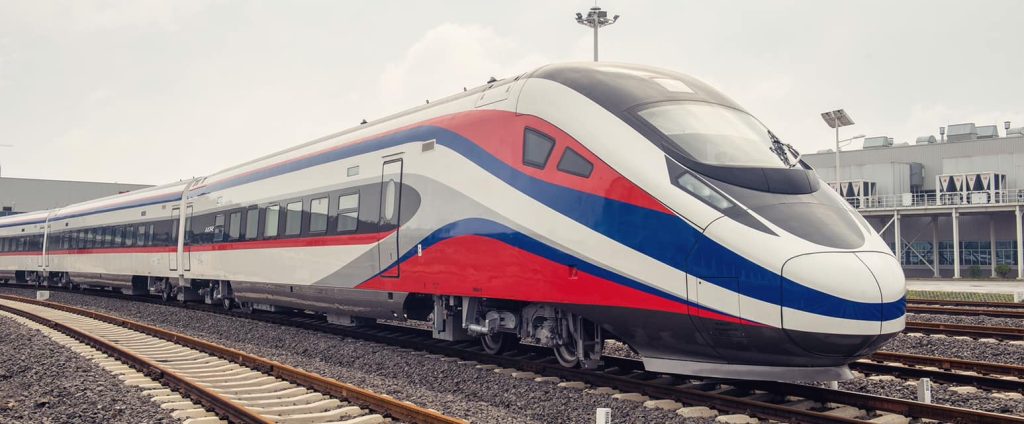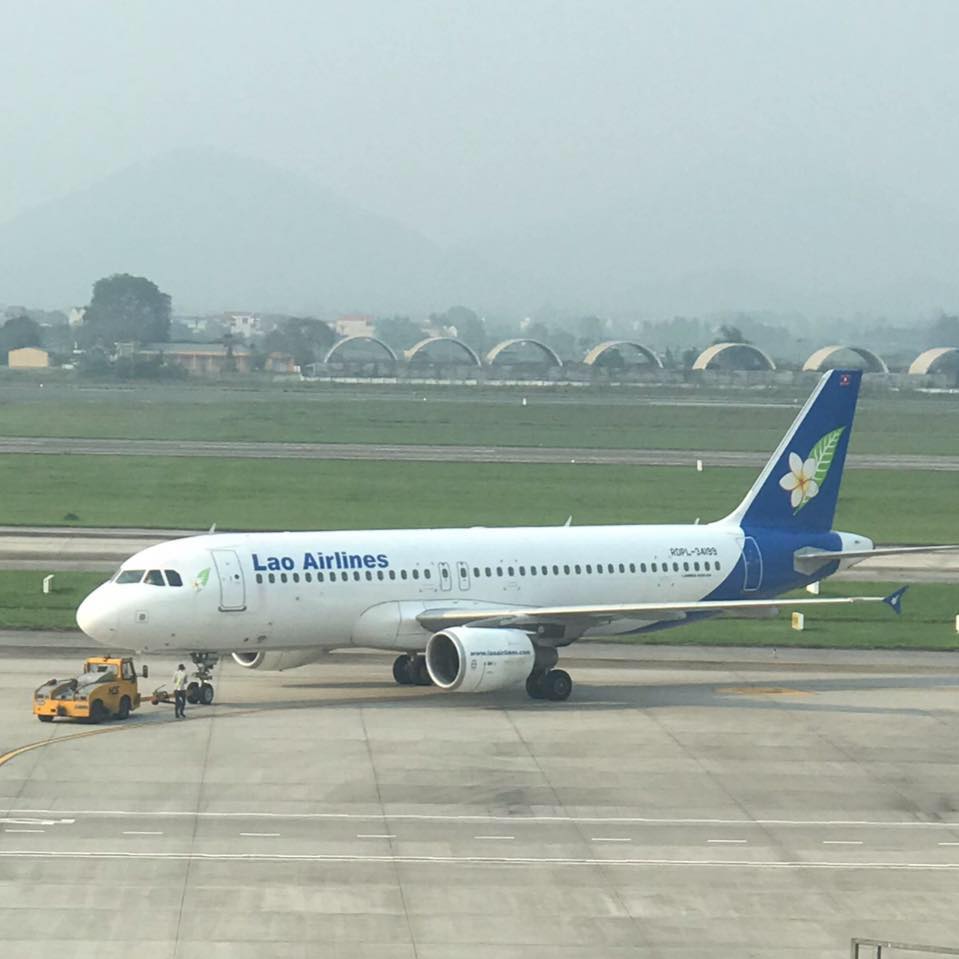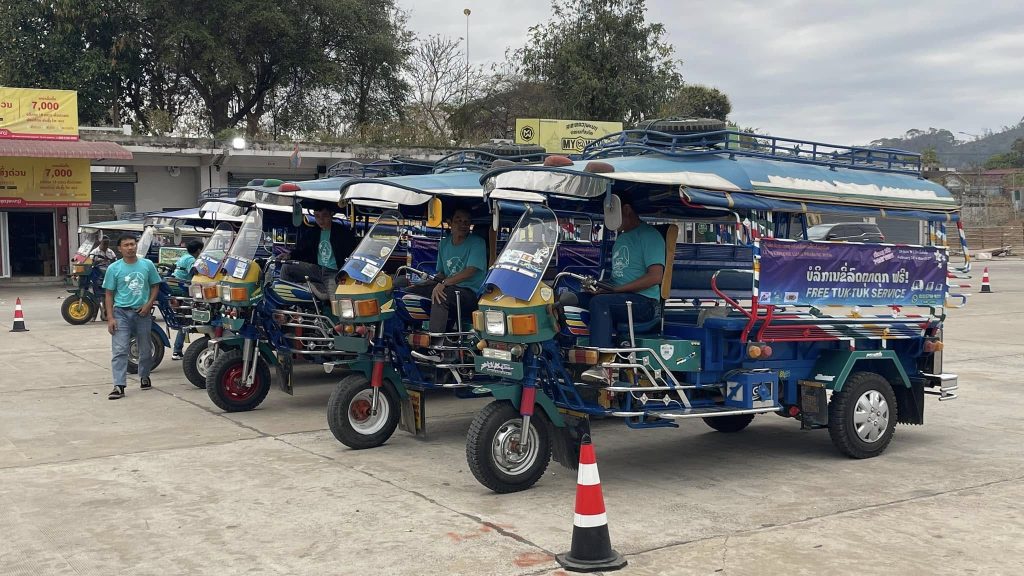Discover how to get around Laos in 2025-2026: from modern trains and budget buses to domestic flights and motorbike adventures. Travel smart, travel safe.
Laos is a landlocked gem of Southeast Asia, known for its tranquil atmosphere, breathtaking landscapes, and rich cultural heritage. Whether you are planning to wander through the historic streets of Luang Prabang, take a scenic river cruise on the Mekong, or explore the remote mountains of northern Laos, one of the most common questions travelers ask is: how to get around Laos?
The answer depends on your budget, schedule, and sense of adventure. From modern trains and affordable buses to domestic flights, tuk-tuks, and motorbikes, Laos offers a variety of transport options. In this guide, we’ll break down everything you need to know about getting around Laos — including buses, trains, flights, road conditions, and travel times between cities – so you can plan your journey with confidence.
Traveling by Bus and Minivan in Laos

For decades, buses and minivans have been the backbone of transportation in Laos. They remain the most common way for both locals and tourists to travel between towns and cities.
- Types of buses:
- Local buses: Inexpensive but slow, stopping frequently for passengers.
- VIP or Express buses: More comfortable, often air-conditioned, and ideal for long-distance travel.
- Sleeper buses: Equipped with reclining seats or small bunks for overnight journeys.
- Minivans: Faster than large buses but often cramped, especially on busy routes.
- Popular bus routes:
- Vientiane to Luang Prabang: 8–10 hours by bus, winding through scenic mountains.
- Vientiane to Vang Vieng: About 4 hours, shorter if using the new expressway.
- Luang Prabang to Vang Vieng: 5–6 hours on winding roads.
- Costs: Bus tickets are generally very affordable, ranging from $10–$25 USD depending on distance and class.
- Road conditions: Be prepared for bumpy and winding roads, especially in mountainous regions. Motion sickness medication may be useful.
If you want a budget-friendly way of getting around Laos, buses and minivans are still the go-to choice.
Traveling by Train in Laos

One of the most exciting developments in Laos transportation is the Laos-China Railway, which officially launched in late 2021. This high-speed rail has transformed how to get around Laos, offering safe, fast, and comfortable journeys between major cities.
- Main route: Runs from Vientiane in the south to Boten at the Chinese border, with stops at key cities such as Vang Vieng, Luang Prabang, and Oudomxay.
- Travel times:
- Vientiane to Vang Vieng: ~1 hour by train (vs. 4 hours by bus).
- Vientiane to Luang Prabang: ~2 hours (vs. 8–10 hours by road).
- Luang Prabang to Oudomxay: ~1.5 hours.
- Tickets: Prices are very reasonable — around $15–$30 USD depending on distance and class. Tickets can be purchased at stations or through official apps.
- Comfort: Trains are air-conditioned, modern, and safe, making them an excellent option for families and travelers who prefer speed over road adventures.
For many, the train is now the most convenient answer to the question of how to get around Laos quickly and comfortably.
Domestic Flights in Laos

Given the country’s mountainous terrain and long distances, domestic flights are sometimes the best way to save time.
- Airlines: The main carriers are Lao Airlines and Lao Skyway.
- Destinations: Major routes include Vientiane, Luang Prabang, Pakse, and Savannakhet. Some regional airports serve smaller cities, though schedules may be limited.
- Flight times:
- Vientiane to Luang Prabang: 45 minutes.
- Vientiane to Pakse: 1.5 hours.
- Luang Prabang to Pakse: ~2 hours.
- Costs: Domestic flights range from $50–$120 USD one way, depending on the route and booking time.
While more expensive than buses or trains, flights are ideal for travelers with limited time who want to see multiple regions of Laos in one trip.
>> If you’re traveling with companions and prefer an assured Laos private trip, consider arranging it through a trusted Indochina tour operator.
Car and Motorbike Travel in Laos

For adventurous travelers, renting a car or motorbike provides flexibility and independence.
- Car rental: Available in larger cities like Vientiane and Luang Prabang. Driving yourself is possible, but road conditions, unpredictable traffic, and limited signage make it challenging for first-time visitors. A safer option is to hire a car with a driver.
- Motorbike rental: Popular in tourist hubs such as Luang Prabang, Vang Vieng, and Pakse.
- Daily rental rates: $7–$20 USD.
- Perfect for exploring rural areas, waterfalls, and local villages.
- Common routes: The Bolaven Plateau loop (southern Laos) or riding around the 4000 Islands.
- Safety tips: Always wear a helmet, check brakes and lights before renting, and carry an international driving permit. Roads can be slippery during the rainy season, so drive cautiously.
For travelers who want freedom and adventure, motorbikes remain one of the most rewarding ways of getting around Laos.
Tuk-tuks, Songthaews, and Local Transport

Within towns and cities, local transport options add to the charm of getting around Laos.
- Tuk-tuks: Three-wheeled vehicles perfect for short rides. Always negotiate the fare before starting the trip.
- Songthaews: Shared pickup trucks with benches in the back, used for short inter-town travel. They are cheap but can be crowded.
- Bicycles: Available for rent in smaller towns like Luang Prabang or Don Det in the 4000 Islands. Cycling is a slow-paced and eco-friendly way to explore.
These options are inexpensive and offer a local experience, especially for short distances.
Traveling in Laos by Boat

Although Laos is a landlocked country, rivers remain an important and scenic way of getting around Laos, especially along the Mekong. The most famous journey is the two-day slow boat trip between Huay Xai (near the Thai border) and Luang Prabang, where travelers can watch village life and jungle landscapes unfold at a relaxed pace. In the south, boats are the only way to reach the 4000 Islands (Si Phan Don), with ferries connecting Don Khong, Don Det, and Don Khon. Luxury river cruises also operate on the Mekong, offering comfort and guided cultural excursions, while local ferries provide short crossings for residents. Although slower than trains or buses, traveling by boat in Laos is a memorable experience that combines transport with cultural immersion.
Road Conditions in Laos
Road quality in Laos varies greatly:
- Highways: Main routes between Vientiane, Luang Prabang, and Vang Vieng are in decent condition and improving thanks to new infrastructure.
- Mountain roads: Winding, narrow, and sometimes dangerous, especially during the rainy season (May–October) when landslides are possible.
- Lighting: Poor in rural areas, so avoid traveling at night.
- Traffic: Generally light, but driving standards differ from Western countries.
Knowing what to expect will help make getting around Laos safer and more enjoyable.
Travel Times Between Major Destinations
Here’s a quick look at average travel times by bus, train, and flight:
| Route | Train | Bus/Minivan | Flight |
| Vientiane → Luang Prabang | 2 hrs | 8–10 hrs | 45 min |
| Vientiane → Vang Vieng | 1 hr | 4 hrs | — |
| Vientiane → Pakse | — | 12–14 hrs | 1.5 hrs |
| Luang Prabang → Oudomxay | 1.5 hrs | 6 hrs | — |
| Luang Prabang → Pakse | — | 18–20 hrs | 2 hrs |
This table highlights why the train and domestic flights are becoming increasingly popular among travelers.
>> Check out other updated articles available in the Laos travel guide here!
Tips for Getting Around Laos
- Book in advance: Train tickets can sell out quickly, especially on weekends and holidays.
- Use reputable agents: For bus and minivan tickets, book through official counters or trusted travel agencies.
- Carry small cash: Tuk-tuks, songthaews, and rural services don’t accept cards.
- Be flexible: Delays are common, particularly in the rainy season. Plan buffer time for connections.
- Travel light: Narrow buses and shared transport can be cramped.
Conclusion
Figuring out how to get around Laos is part of the adventure of exploring this unique country. Thanks to new train services, affordable buses, convenient flights, and local tuk-tuks, getting around Laos is now easier than ever. Each transport option offers a different experience: scenic but slow buses, fast and modern trains, time-saving flights, or adventurous motorbike rides through stunning landscapes.
The best choice depends on your travel style. Budget-conscious backpackers may prefer buses and songthaews, families might opt for trains and flights, while adventurers can embrace motorbike journeys. With some preparation and flexibility, your journey through Laos will be smooth, memorable, and filled with discovery.
>> People read also about the best time to visit Laos.

